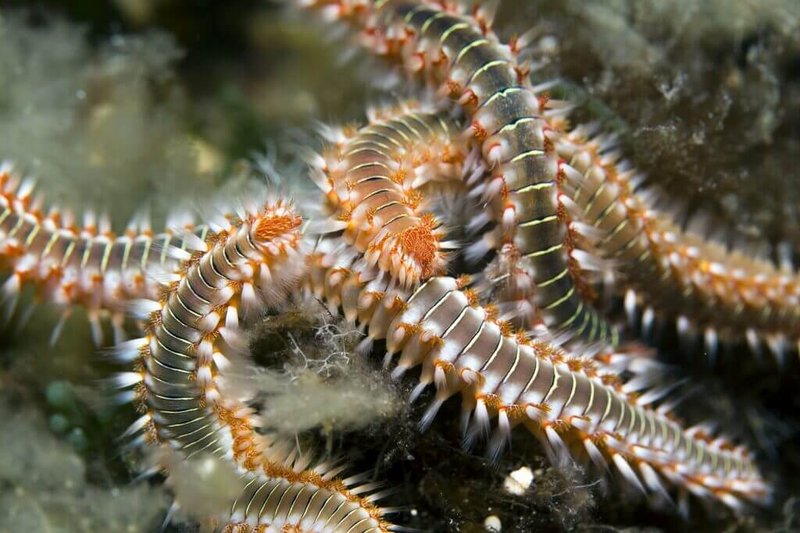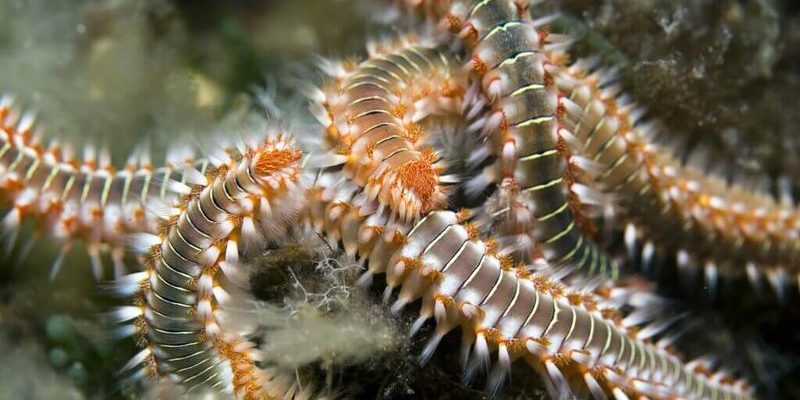
Bristle worms belong to a group called polychaetes, which basically means “many bristles.” They come in lots of shapes, colors, and sizes, and you can find them in various environments, from sandy beaches to rocky shores. While they play important roles in their ecosystems, you might be wondering if you need to steer clear of them. Spoiler alert: it’s a mixed bag, and I’m here to break it down for you.
What Are Bristle Worms?
Bristle worms are fascinating creatures that can be both beautiful and a bit disturbing, depending on your perspective. With over 10,000 species identified, they vary widely in size and appearance. Some are just a few inches long, while others can grow to several feet! They typically have segmented bodies with numerous bristles, which give them their name.
These worms are part of the ecosystem, serving as essential food sources for many marine animals. They often thrive in environments rich in organic material, like coral reefs and seagrass beds. They can also be found in mud or sand, where they burrow and contribute to nutrient cycling. By breaking down organic matter, they help maintain the health of their habitats.
You may not realize it, but bristle worms can be beneficial for marine tanks too. They help keep the aquarium clean by consuming waste and leftover food. However, their presence can sometimes make you think twice about sticking your hands in the water.
Are Bristle Worms Dangerous to Humans?
Now, let’s get to the heart of the matter: are bristle worms, in fact, harmful to us? Generally speaking, **most bristle worms are not dangerous**. They won’t attack you unless you poke them deliberately. However, that doesn’t mean you should ignore them completely.
One of the primary concerns is their bristles, which are made of stiff, hair-like structures called setae. If you accidentally come into contact with these bristles, they can break off in your skin, causing irritation, rashes, or a stinging sensation. This is especially true for certain species like the fireworm, which has venomous bristles that can lead to more significant discomfort.
If you happen to get stung, don’t panic. Most reactions can be treated at home! Rinse the affected area with warm water to help soothe the pain. You may want to apply some hydrocortisone cream or take an antihistamine to alleviate itching and swelling.
Identifying Potentially Harmful Species
It helps to know which species of bristle worms you might want to watch out for. While plenty are harmless, a few can cause problems if provoked. Here are some notable ones:
- Fireworm (Hermodice carunculata): Known for its bright red coloration and painful sting, this worm is often found in warm waters.
- Palolo Worm (Eunice viridis): While its bite is not as serious as the fireworm, it can still cause irritation.
- Bearded Fireworm (Hermodice compresicauda): Similar to the fireworm, it has venomous bristles that can deliver a painful sting.
Knowing the difference between these potentially harmful species and their harmless cousins can help you avoid any nasty surprises. If you’re not sure, it’s always better to err on the side of caution and keep your distance.
How to Handle Bristle Worms Safely
If you’re out enjoying a day at the beach or snorkeling in tropical waters, you might encounter bristle worms. Here’s how you can keep things safe:
1. **Avoid Touching:** This might seem obvious, but it’s worth repeating. If you see a bristle worm, give it space. Don’t try to handle it, as it could lead to unwanted irritation.
2. **Wear Protective Gear:** If you’re going to be working around bristle worms, especially in marine environments, consider wearing gloves. This can help protect your skin from any accidental brushes with their bristles.
3. **Educate Others:** If you’re with friends or family, share what you know. Teaching others about bristle worms (and which ones to avoid) can prevent accidents and promote safer experiences in nature.
4. **Act Quickly if Stung:** As mentioned, rinse the affected area and treat symptoms as needed. Keeping a first aid kit handy when exploring can help you respond to any unexpected issues.
Environmental Impact of Bristle Worms
Bristle worms play a vital role in their ecosystems beyond just being a potential nuisance. They help maintain the health of marine environments by breaking down organic matter and cycling nutrients. This process allows surrounding marine life to thrive.
In coral reef habitats, for example, bristle worms can help keep algae in check, promoting the overall health of the reef system. They also provide food for fish and other predators, making them essential players in the food web.
Unfortunately, human activities like pollution and habitat destruction can negatively impact bristle worm populations and their ecosystems. Protecting these habitats helps ensure that bristle worms continue to do their important work in the environment while reducing the chances of human-worm interactions turning unpleasant.
So, are bristle worms harmful to humans? In most cases, the answer is no, but it’s wise to approach them with caution. While they can irritate your skin if you’re not careful, the benefits they provide to their ecosystems far outweigh the risks. With the right knowledge and a little common sense, you can safely navigate their waters.
Next time you find yourself at the beach or exploring marine life, take a moment to appreciate these unique creatures from a safe distance. After all, even the most peculiar beings in nature have their own important roles to play!

